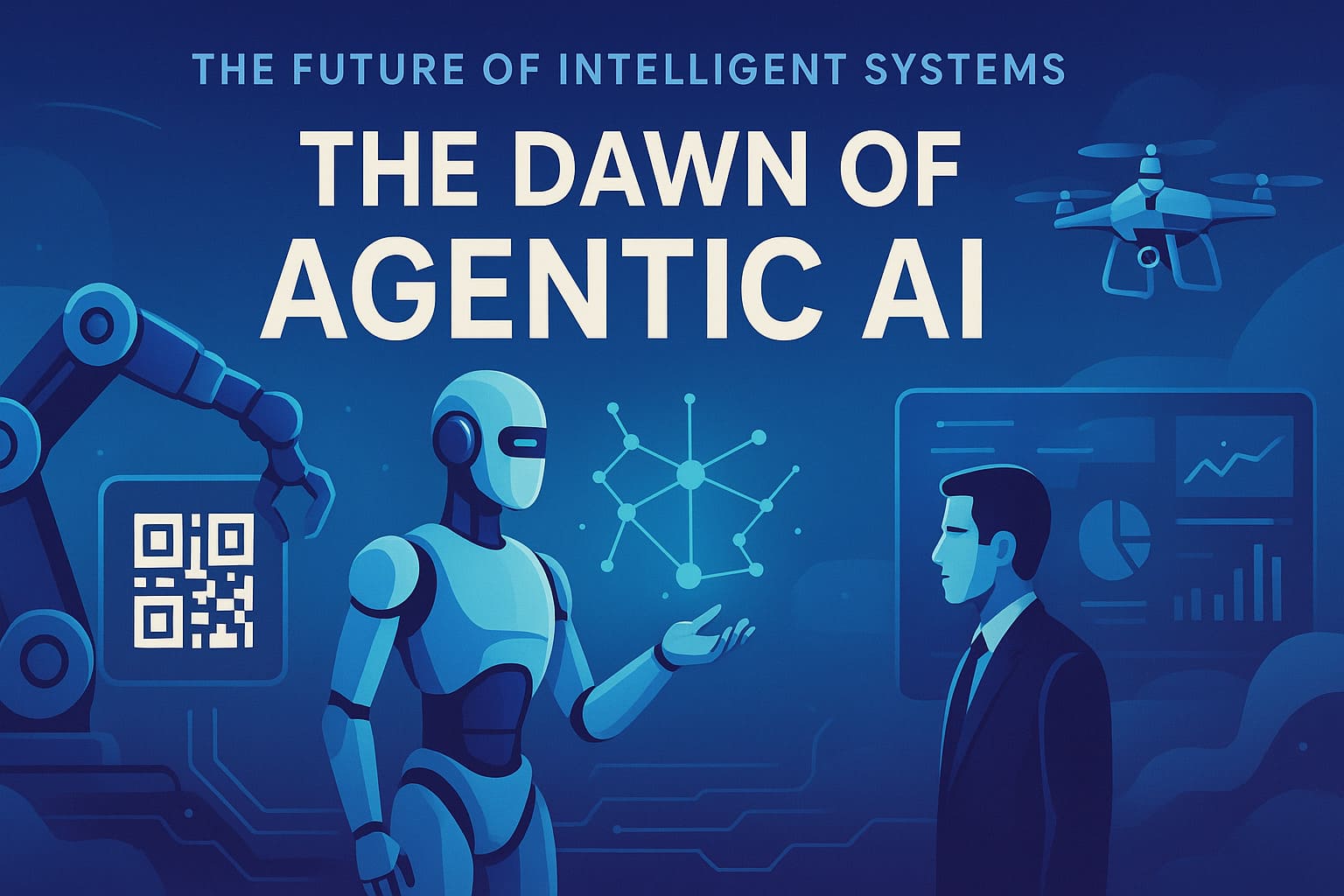Introduction
In 2025, the technology landscape is evolving at breakneck speed. Among the many innovations capturing attention, agentic AI — autonomous systems capable of decision-making, planning, and acting with minimal human oversight — is emerging as a defining trend. Coupled with advances in governance, security, edge computing, and post-quantum cryptography, agentic AI could reshape how we interact with intelligent machines, networks, and data.
In this post, we’ll unpack what agentic AI is, why it matters, the enabling technologies pushing it forward, challenges to overcome, and practical use cases already arising.
What Is Agentic AI?
Agentic AI refers to systems that don’t merely respond to prompts, but proactively act, plan, make decisions, and adapt to evolving environments — much like autonomous agents. Unlike classical AI or deterministic rule-based systems, agentic AI:
-
Operates with autonomy: It can choose actions without step-by-step human instructions.
-
Sets and pursues goals: It can plan strategy and break tasks into subtasks.
-
Adapts over time: Learns from feedback and unexpected changes.
-
Coordinates multiple tasks: It can manage interdependent processes simultaneously.
Gartner lists Agentic AI as one of its top strategic technology trends for 2025.
Why Agentic AI Is a Game Changer
-
Scalability of decision-making
As systems grow more complex (e.g. smart factories, supply chains, multi-robot systems), human-in-the-loop decision-making becomes a bottleneck. Agentic AI can scale up intelligent coordination across systems. -
Efficiency and speed
Autonomous agents can respond faster than humans to dynamic changes — adapting to new conditions in real time. -
Improved human-machine collaboration
Rather than replacing humans, agentic AI can act as a collaborator, offloading routine decisions and allowing humans to focus on high-level strategy. -
Cross-domain applications
From logistics and robotics to finance, healthcare, and IoT, agentic AI can transform how systems self-manage, self-optimize, and self-correct.
Enabling and Supporting Trends
Agentic AI is not a stand-alone concept — it thrives at the intersection of multiple technology trends:
-
AI Governance & Trust
As AI systems gain autonomy, the need for accountability, transparency, ethical safeguards, and regulatory oversight becomes critical. Gartner highlights AI Governance Platforms as another top trend. -
Post-Quantum Cryptography
As quantum computing matures, existing cryptographic systems become vulnerable. Secure, quantum-resistant encryption is essential to protect communications between autonomous agents. -
Edge & Hybrid Computing
Not all decision-making should happen in remote cloud servers. Agents operating at the edge (on devices) can react faster and more reliably, while hybrid cloud-edge architectures support heavier models and coordination. McKinsey’s outlook emphasizes this “scale and specialization” duality. -
Autonomous Systems & Robotics
Physical robotics, drones, and self-driving systems provide fertile ground for embedding agentic logic, enabling real-world autonomy. -
Ambient Intelligence & Spatial Computing
Intelligent environments that sense, predict, and respond — e.g. smart buildings, AR/VR spaces — will benefit from agents that mediate between sensors, users, and infrastructure.
Challenges & Risks
Agentic AI is powerful, but comes with significant challenges:
| Challenge | Description |
|---|---|
| Safety & alignment | Autonomous agents might act in unintended or harmful ways if their goals are misaligned with human values. |
| Explainability & transparency | Ensuring agents can justify and explain decisions is harder when they operate autonomously. |
| Robustness & reliability | Agents must perform under uncertainty, failures, adversarial inputs, and unexpected scenarios. |
| Regulation & liability | Who is accountable when an agent errs — the developer, the deployer, the agent itself? |
| Infrastructure demands | Compute, power, connectivity, and data management at scale are nontrivial obstacles. |
| Security & adversarial attacks | Agents might be manipulated or spoofed by malicious actors, especially in distributed systems. |
Because of these, agentic AI adoption will likely start in controlled, lower-stakes domains (e.g. logistics, IT automation) before expanding to critical sectors like healthcare or transport.
Real-World Use Cases
Here are some promising domains where agentic AI is already emerging:
-
Supply Chain & Logistics
Autonomous agents to manage routing, resource allocation, re-routing under disruptions, warehouse coordination. -
IT & Cloud Operations
Agents monitoring infrastructure health, scaling resources, healing systems, responding to anomalies without human operator intervention. -
Smart Manufacturing / Industry 4.0
Agents coordinating robotic cells, predictive maintenance, scheduling, and dynamic load balancing. -
Finance & Trading
Algorithmic trading systems with higher autonomy, risk management, position adjustments, and multi-strategy agents. -
Autonomous Vehicles & Drones
Beyond perception, embedding agentic decision-making (e.g. route planning, environment negotiation). -
Personal Digital Assistants
Future assistants might not just respond to tasks, but proactively schedule, plan, and orchestrate across apps and services.
How to Prepare (For Businesses, Developers, and Enthusiasts)
-
Start small with pilot agents
Use limited-scope autonomous agents in safe environments (e.g. internal IT, logistics, monitoring) to learn lessons. -
Invest in governance frameworks
Build in explainability, audit logs, human fallback, and safety checks from the start. -
Leverage modular architectures
Decouple perception, planning, decision, actuation modules so you can audit, maintain, and swap components. -
Use hybrid edge-cloud models
Run fast local inference at the edge; synchronize, coordinate, and update larger models in the cloud. -
Collaborate across disciplines
Combine expertise from AI, ethics, security, policy, and domain experts to guide deployment. -
Monitor emerging standards & regulation
Stay current with evolving norms around responsibility, transparency, and adherence to regulation.
Conclusion
We are likely standing on the threshold of a new paradigm in AI: one where systems act autonomously, not just reactively. Agentic AI promises leaps in scale, responsiveness, and system coordination across domains from logistics to healthcare, robotics to digital infrastructure.
But for all its potential, agentic AI also demands careful stewardship — strong governance, safety nets, transparency, and collaborative development. Its transformative power will only realize fully when society and technology grow in tandem.
#AgenticAI #FutureTech #AITrends2025 #ArtificialIntelligence #IntelligentSystems #EdgeComputing #AIInnovation #AutonomousSystems #TechBlog #AIForBusiness
